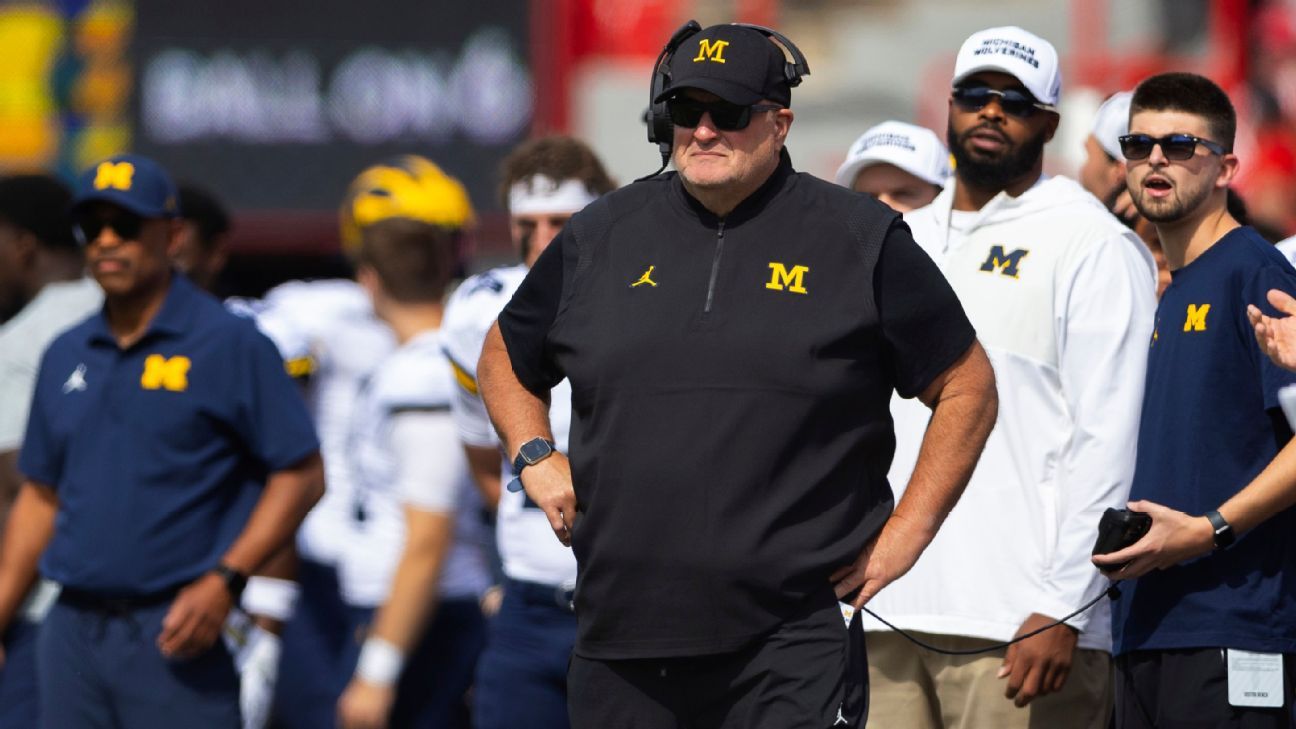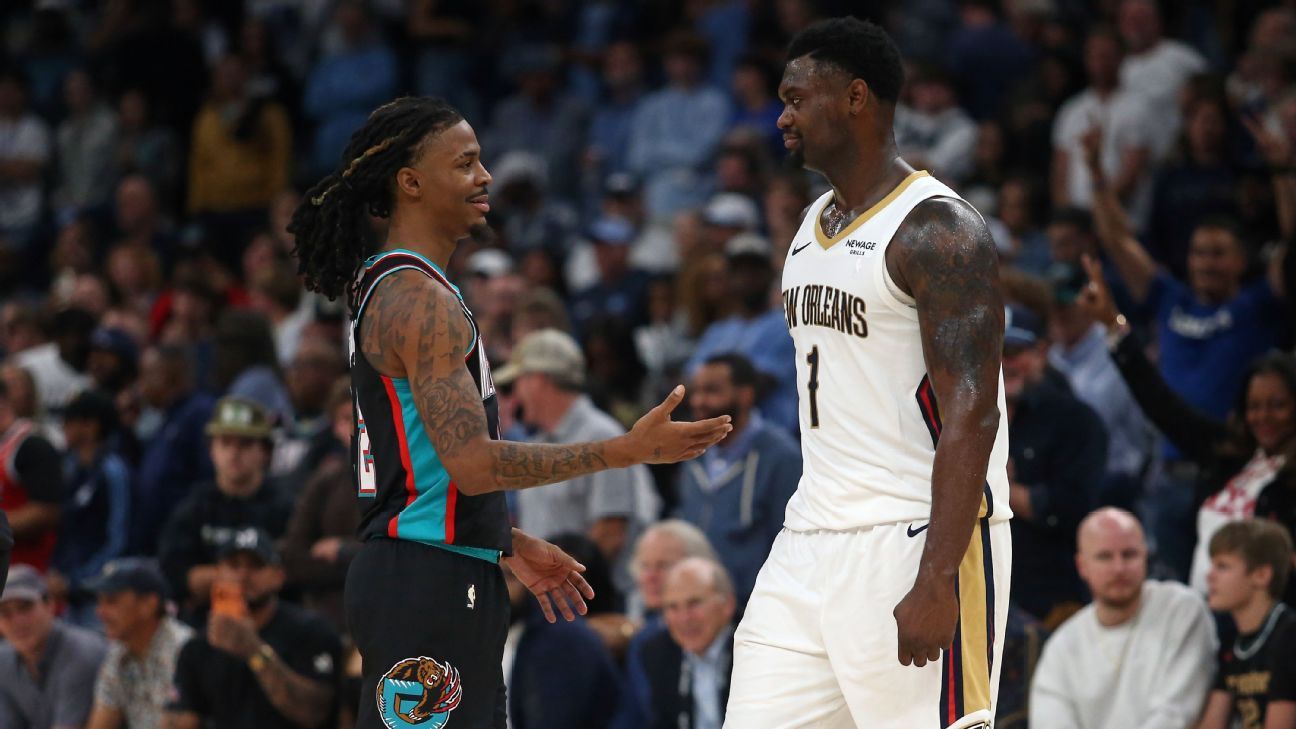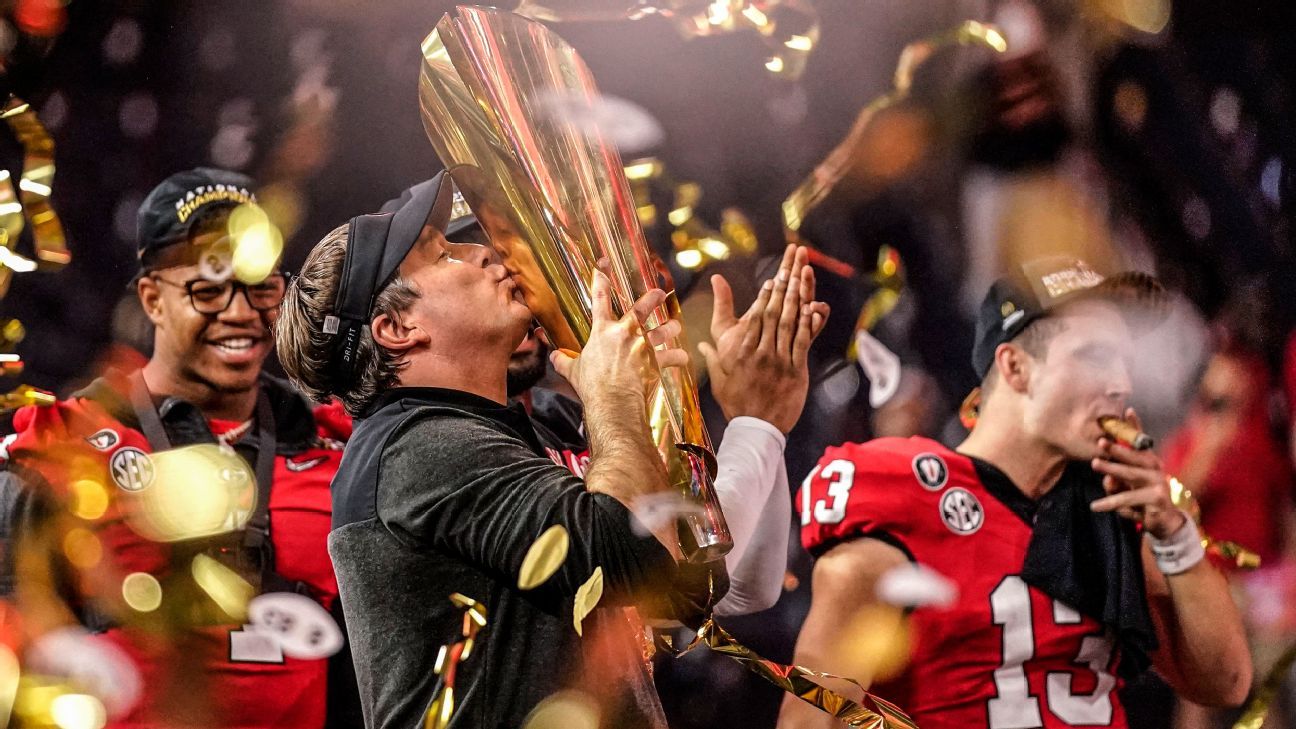
Andrea AdelsonSep 8, 2025, 11:06 AM ET
- ACC reporter.
- Joined ESPN.com in 2010.
- Graduate of the University of Florida.
THE CALL COMES into the huddle as the Clemson crowd stands, the noise deafening. LSU running back Caden Durham leans close to Garrett Nussmeier, turning his head to listen to his quarterback.
Durham hears all he needs to hear. The first play in the first game of the season is going to him. He lines up to the right of Nussmeier, surveying the field.
For the first time in nearly a year, he feels completely healthy. He wears his normal size 11 cleats, no more steel plate lining the bottom, no more padded insoles, no more toe and foot pain. He thinks about his late grandmothers, two women he calls his "why," and readies himself.
It is finally time to show what made the 5-foot-9, 205-pound Durham the top high school running back in his class in Texas: his blend of strength, ability to change direction and speed. "The prototype," running backs coach Frank Wilson says, "of what we are looking for."
Just before Nussmeier gets the snap, Durham shifts to the left. Then he takes a handoff and moves left. Immediately, Clemson linebacker Wade Woodaz comes to wrap him up. Durham spins out of the tackle, putting his right hand onto the ground to maintain his balance. Then he shoots right, changing direction so quickly that the Clemson defense has a hard time tracking him. He runs for 24 yards.
"Being 100 percent and being able to give 100 percent, it feels amazing to give my team the real Caden Durham," he says.
Durham finished the season opener with a game-high 74 yards and a touchdown. And LSU beat then-No. 4 Clemson 17-10 and moved up to No. 3 in the polls. While most of the attention on offense has focused on Nussmeier, it is no secret the Tigers need more out of their running game this season if they want to win a championship.
On that front, the real Caden Durham is ready to deliver.
COREY DURHAM SIGNED up Caden to play football at age 5. He already knew his son was fast. So did Caden's mom, Staneshia Bell, who won the Big 12 60-meter indoor title in 2000 at Oklahoma.
Caden started out as an offensive lineman because of his stocky build. He learned how to block, but he was so fast, Corey Durham remembers, his son "would block kids and take them almost into the end zone, while outrunning the running backs he was blocking for." His career as an offensive lineman ended shortly thereafter.
Caden eventually moved to running back but also ran track. In 2014, he won the 100 meters at the USATF Junior Olympics and won another Junior Olympics title in 2018 in the 200 meters. That speed would help launch his prep football career.
"The other coaches he would play against would call him a cheat code," Corey Durham says. "He'd get the ball three times and run for 250 yards and three touchdowns."
His mother had moved to the Dallas area, so Caden decided to leave his dad and Oklahoma and move to Texas, hoping that more colleges would notice him under the brighter lights. Caden enrolled at Duncanville High, one of the top prep programs in the area.
"That was probably one of the best things that ever happened to us," Bell said. "Nobody knew who he was, just the people in Oklahoma. But if you're in Texas, and you're out there shining, people can see it more."
Durham was buried on the depth chart initially and hurt his back while trying to squat 400 pounds shortly before the state championships. He stood on the sideline, watching as Duncanville lost in the final and vowed to never let his team lose in the state championship game again.
At this point, headed into his junior year, Durham had only a handful of offers, none from major programs. He decided to go to a camp at Alabama, and proceeded to run a 4.28 in the 40-yard dash -- a fraction of a second off the 4.24 Chris Johnson ran in 2008, the fastest time ever recorded by a running back at the NFL combine.
That caught the attention of then-coach Nick Saban, who called Durham into his office to meet him. It was not until later that Durham started to replay the conversation in his mind. He tried to remember the exact words Saban said but was having trouble. He turned to his mother and asked, "Did he offer me a scholarship?"
She told him he should text someone to find out. Durham texted one of the Alabama assistant coaches, who confirmed that yes, Saban had offered him a scholarship.
"I was hype, doing backflips, jumping up and down. Being offered by Nick Saban, I was full of excitement. That made me want to work harder. If Nick Saban is seeing me, I know I'm really doing well. So now I want to do better," Durham said.
Durham did exactly that his junior year, rushing for nearly 2,000 yards, 36 touchdowns and leading Duncanville to the state 6A title while winning offensive MVP honors in the championship game. By the time his junior year ended, he had more than 30 offers, and LSU had entered the picture.
Running backs coach Frank Wilson and Durham hit it off immediately. Durham says Wilson is one of the biggest reasons he chose LSU. "He is not all about football," Durham says. "He's like a father figure. Nick Saban is Nick Saban, but he's not going to be with me 24-7. Frank Wilson is going to be with me 24-7." Plus, the Tigers made Durham a priority -- he was the only running back they signed in the class of 2024.
Wilson had previously served as running backs coach at LSU from 2010 to 2015, coaching seven running backs that eventually were drafted into the NFL -- from Leonard Fournette to Jeremy Hill. But under coach Brian Kelly, LSU has yet to have a running back rush for more than 1,000 yards. LSU signed Durham believing he could get the Tigers back to the rushing dominance they displayed in earlier eras.
"We had been in search of a guy that fit in totality, not just the physical but the mental as well," Wilson said. "So he became the first high school prospect in the Brian Kelly era that we signed to give us what we were looking for."
His senior year at Duncanville started right where he left off. Durham ripped off touchdowns and chunks of yards, and Duncanville cruised to wins. But in December, just before the state championship game, Durham received devastating news while he was at school.
His paternal grandmother, Lenora Madkins, had been hospitalized in Oklahoma. Doctors delivered a grim diagnosis: She had Stage 4 lung cancer. Durham collapsed in a heap of tears, so distraught that two football coaches had to hold him up by his shoulders to help him walk outside to his mother's waiting car. From there, Durham, his mom and younger sister drove three hours to Oklahoma.
Durham could not calm himself down the entire ride. When he was 9, he lost his maternal grandmother, Janet Roberts, in a similar way. Roberts had been feeling ill. She eventually went to a doctor and was diagnosed with late-stage leukemia. Roberts went through chemotherapy treatment but died within a few months.
He could not help but think, "How is this happening all over again?" Durham was especially close with both women. He spent nearly every day at Roberts' house as a child, as she watched him and his siblings while his mother worked. They would pile into bed with her and watch scary movies or help her do chores around the house. To this day, he only eats grits with butter and sugar because that's the way "Granny" made them.
He also shared special moments with Madkins, whom he called "Grams." Every Saturday, they would go to her house to watch Oklahoma football. She always hosted large family gatherings, from cookouts to pool parties.
"She was my rock," Durham says. "She kept everything together, and she taught me a lot about being a man."
When they arrived at the hospital, Durham walked in to see Madkins hooked up to machines, a breathing tube in her nose. Durham had to leave the room to collect himself, but when he walked back in, he had a simple request: "You have to stay alive to watch me play."
She had a request of her own: "Score six touchdowns for me."
Durham returned to Texas, more determined than ever to win another state title. His grandmother had the state championship game put on the television in her hospital room so she could watch. Durham scored three touchdowns in the first half -- from 26, 72 and 92 yards. He finished with 231 yards and was the offensive MVP again.
"I thought I was going to get six touchdowns," Durham says.
Madkins made it through the next few months before dying in February 2024, just days before Durham was set to run at a track meet at Texas A&M. Durham briefly went back to Oklahoma to see his family before returning to school. Not only did he not want to let his relay partners down, track was his first love. When he ran, he thought about nothing else but going fast and trying to win. Durham could not talk about losing his grandmother, so instead, his relay partners told him jokes to make him laugh. He finished second in the 100 meters, and his 4x200-meter relay team posted the fastest time in the nation.
Three months later, that same relay team set a U.S. national high school record at the state meet, running in 1 minute, 22.25 seconds. Before leaving for LSU, there was one thing Durham had left to do.
He had images of both of his grandmothers tattooed on his chest, a daily reminder to keep doing the right things, to keep pushing forward, to simply keep going. He would begin to use the hashtags #llgrams #llgranny on his social media accounts.
Long live Grams. Long live Granny.
DURHAM ARRIVED IN time for summer workouts and found himself toward the bottom of the depth chart as the 2024 season began. But LSU opened 1-1 and trailed South Carolina 17-0 midway through the second quarter last September. The Tigers needed a spark and turned to Durham, who ran for two touchdowns to help LSU to a comeback win.
His parents did not travel to the game, believing he would have limited carries. Corey Durham watched from his home in Moore, Oklahoma, and after the second touchdown, ran outside screaming and hollering, "My baby scored a touchdown!" LSU coach Brian Kelly presented Durham with a game ball, which Durham gave to his mother.
It appeared as if Durham would become a key part of the offense. Two weeks later against South Alabama, Durham was well on his way to the best day of his career when he felt something strange after digging his foot into the ground to gain more yards. He came to the sideline and saw an indented mark on his cleat. The trainers slowly started to take it off, but Durham assured them there was nothing wrong with him.
Then he looked down. His toes were pointed in different directions. He had dislocated multiple toes on his left foot, including his big toe. Now trainers had to pop them back into place.
Nothing would be the same after that.
Durham told the coaching staff he could play through the pain, refusing to sit out. Kelly never publicly disclosed the injury, and Durham played through it, ultimately starting five more games after South Alabama. To keep playing, Durham had to wear a cleat multiple sizes larger than normal. Trainers placed a steel insert inside the cleat to help give him stability, then another insert to buffer any discomfort from the metal in his shoe, then an insole on top.
When he was not playing or practicing, Durham had to wear a walking boot. He also developed turf toe on his right foot. Nothing helped the constant pain. Numbing shots on his foot were out of the question because they would prevent him from feeling the ground while running. Tylenol and ibuprofen also did not work. He simply had to play through it, even though his speed had dropped significantly.
"I felt like I had something to prove," Durham said. "I had to prove something to myself, that I wasn't this and that in high school and in college I'm nothing. I had to show I could play through the adversity."
Despite the injury, Durham earned All-SEC freshman honors and led the team with 753 yards and six total touchdowns -- including a three-touchdown effort against Arkansas. Consider this: Durham had zero carries in the season opener. To go from that, to All-SEC honors, with multiple dislocated toes and turf toe?
"That kid is so tough," Kelly said. "I can't tell you how tough a kid he is."
Said Wilson: "It personifies who he is and what we thought he was. He tolerated a tremendous amount of pain when most wouldn't be able to walk."
By spring practice, Durham felt better physically and knew big things were ahead. LSU ranked No. 107 in the country in rush offense a season ago, and Durham put himself in charge of fixing that. LSU signed freshman Harlem Berry and returned Kaleb Jackson and Zavion Thomas, giving the Tigers more depth at the position.
Kelly also hired Alex Atkins as run game coordinator for an added layer of help. The result? Durham ended up with 17 carries to lead the way against Clemson, and Kelly praised the run game as the "real difference" in the game.
"I think we all knew what we needed to be better at from last year, and that was a running game that allowed Garrett the opportunity to be a complete player," Kelly said. "We couldn't just be a one-trick pony and throw the ball over the yard. The real difference was the ability to carve out a running game against a really good defense."
There is plenty to build on headed into LSU's game against Florida on Saturday (7:30 p.m. ET, ABC). For Durham, the aim is simple. He will look at himself in the mirror and see his grandmothers, lace up his cleats, and then go.


















































